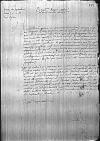Letter #301
Ioannes DANTISCUS to Sigismund I JagiellonGranada, 1526-09-01
Manuscript sources:
Auxiliary sources:
Prints:
| ||||||||||||||||||||||||||||
Text & apparatus & commentary Plain text Text & commentary Text & apparatus Excerpts concerning Dantiscus' travels
Serenissimae Regiae Maiestati Poloniae etc. Domino et domino meo clementissimo
Serenissima Regia Maiestas et Domine, Domine clementissime. Humillimam perpetuae meae servitutis commendationem.
cf.
Datae
Serenissimae Regiae Maiestatis Vestrae humillimus servus
[1 ] For patria Dantiscus probably means a
